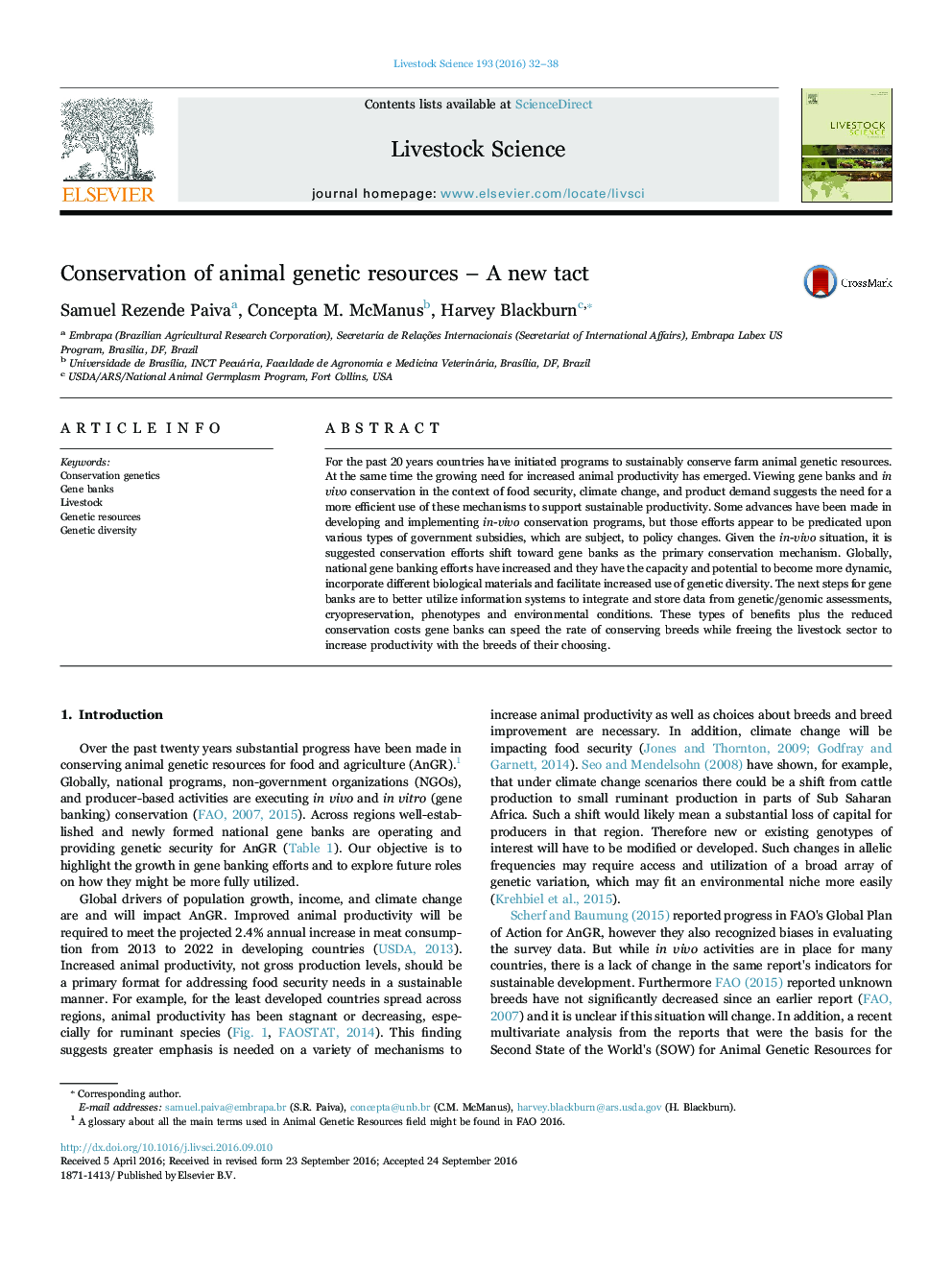| Article ID | Journal | Published Year | Pages | File Type |
|---|---|---|---|---|
| 5543032 | Livestock Science | 2016 | 7 Pages |
Abstract
For the past 20 years countries have initiated programs to sustainably conserve farm animal genetic resources. At the same time the growing need for increased animal productivity has emerged. Viewing gene banks and in vivo conservation in the context of food security, climate change, and product demand suggests the need for a more efficient use of these mechanisms to support sustainable productivity. Some advances have been made in developing and implementing in-vivo conservation programs, but those efforts appear to be predicated upon various types of government subsidies, which are subject, to policy changes. Given the in-vivo situation, it is suggested conservation efforts shift toward gene banks as the primary conservation mechanism. Globally, national gene banking efforts have increased and they have the capacity and potential to become more dynamic, incorporate different biological materials and facilitate increased use of genetic diversity. The next steps for gene banks are to better utilize information systems to integrate and store data from genetic/genomic assessments, cryopreservation, phenotypes and environmental conditions. These types of benefits plus the reduced conservation costs gene banks can speed the rate of conserving breeds while freeing the livestock sector to increase productivity with the breeds of their choosing.
Related Topics
Life Sciences
Agricultural and Biological Sciences
Animal Science and Zoology
Authors
Samuel Rezende Paiva, Concepta M. McManus, Harvey Blackburn,
